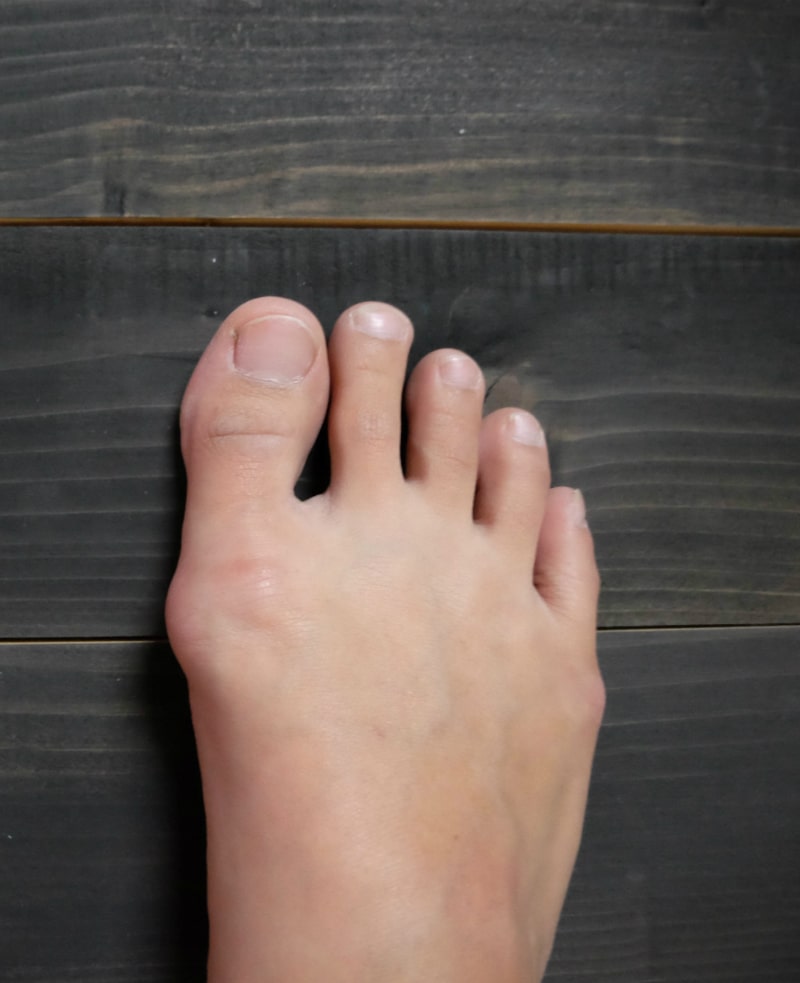Bunions are a common cause of pain and deformity at the base of the big toe.
If you have a bunion, an issue with this joint has caused the big toe to start angling inward toward its neighbors. As that happens, the joint itself becomes displaced, creating a pronounced bump along the inside of the foot—not to mention discomfort, pain, and loss of mobility and function. You may even lose the ability to comfortably perform your favorite activities or wear your favorite shoes.
The good news is that our team here at Texas Foot and Ankle Center are highly trained and experienced in being able to treat this condition! In addition to comprehensive conservative treatment options, our foot surgeons can also perform surgery to correct the issue only if absolutely necessary.
If you are suffering from bunion pain—or recognize the early stages of this problem—contact our Dallas podiatrist office and request the earliest possible appointment.
Why Do Bunions Happen?
Let’s start by clearing up a very common misconception. Bunions aren’t actually caused by women’s footwear.
Many people think that’s the case, and for good reasons. After all, pumps, stilettos, and other high-heeled shoes not only place excess pressure on the front of the foot—the location of a bunion—but also typically have narrow, pointed fronts.
But while wearing these kinds of shoes can certainly exacerbate bunion symptoms, the root cause is usually genetic. Most people who get bunions simply inherited a foot structure and/or gait mechanics that naturally contribute to instability in the joint at the base of the big toe. Other potential contributing causes might include specific injuries to the foot or development or related deformities (such as hammertoes or inflammatory arthritis).
How Can I Recognize a Bunion?
As a starting point, you will likely be able to visually recognize this condition by the fact the big toe is pointing inward (instead of straight ahead). There is also a noticeable bump on the inside edge of the foot, right at the base of the toe.
Beyond visual cues, you may experience difficulty wearing certain kinds of shoes (like the aforementioned high-heeled models).
Another form of difficulty is the actual functionality of the joint itself. With the joint being forced out of position, you will start to lose the toe’s natural range of motion. This can create a rather painful situation.
Pain and loss of joint mobility are major symptoms. Others include:
- Redness
- Swelling
- Calluses and corns
What kinds of bunion treatment options are available?
At Texas Foot & Ankle Center, we offer comprehensive conservative and advanced surgical options for bunions.
- Conservative treatments are meant to help you mitigate symptoms, slow the rate of bunion progression, and enable you to live your preferred lifestyle despite your bunion. They are often appropriate for mild bunions, and may help you delay or even prevent the need for surgery.
- Surgical treatments are meant to fix your bunion and restore natural appearance and function to the feet.
Let’s break these down in more detail.
Conservative Treatment Options for Bunions
Some of the most frequently recommended nonsurgical recommendations include:
- Footwear choices. In very early stages, switching from shoes featuring narrow fronts and/or high heels to low-heeled models with deep, wide toe boxes can avoid too much friction or pressure being placed on the affected area.
- Custom orthotics. Changing to different shoes can potentially be a step in the right direction. For cases that are further along in development, we may recommend custom-fitted orthotic devices. The intent with this option is to correct biomechanical issues (like overpronation) to redistribute pressure away from the forefoot area.
- Icing. One of the ways to reduce inflammation and pain from an early or mild bunion is to ice it for around 15 minutes at a time. Of course, when doing this, the ice should be wrapped in a thin towel to prevent damage to your skin.
- Medication. If you are using over-the-counter medications—such as nonsteroidal anti-inflammatory drugs (NSAIDs) like ibuprofen or naproxen sodium—make sure you consult with our office for specific recommendations regarding types and dosage. If necessary, we may recommend using prescription medication, but this is something we will need to discuss together.
Surgical Treatment Options for Bunions
Especially in the last few years, a variety of exciting new techniques and technologies for improving bunion surgery have been pioneered. While a traditional “open” bunion surgery is still the most widely practiced among podiatric surgeons today, our doctors specialize in several state-of-the-art procedures that can offer benefits like less post-surgical pain, a faster return to weight-bearing activity, more reliable long-term results, and greater convenience.
The Exceptional Bunion Care You Need, Right Here in Dallas
At the end of the day, there’s something you should know about your bunion:
This is a progressive condition. What that means is it will continue to worsen over time if left unaddressed.
Instead of letting a bunion get to the point where it’s causing daily pain and difficulty, see us as soon as you become aware of the problem. We may be able to provide a non-surgical solution, or—if surgery is inevitable or preferred—ensure you get your foot fixed correctly, with less pain and downtime than conventional procedures.
If you have any questions—or are ready to request your appointment for professional bunion treatment at our office in the Lake & Garden District—give us a call or connect with us online. You can reach us at (214) 660-0777 or use the contact form here on our website.
